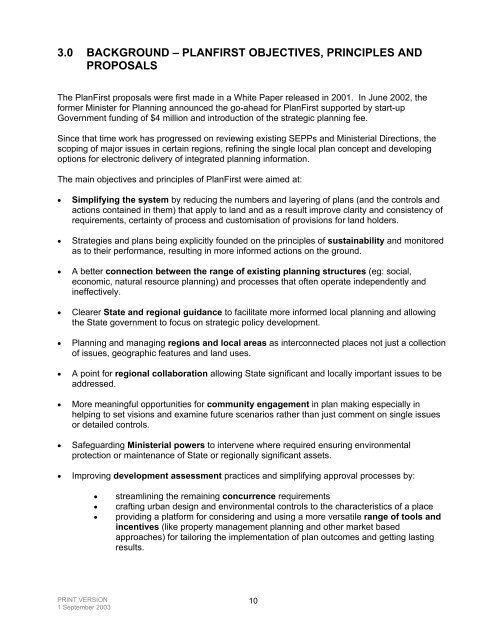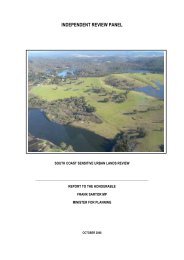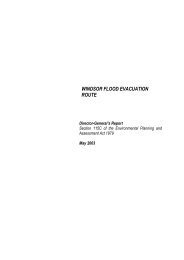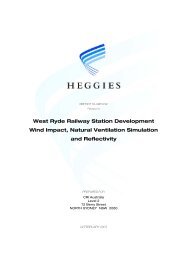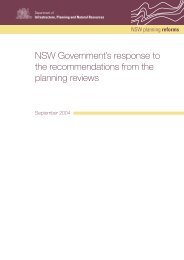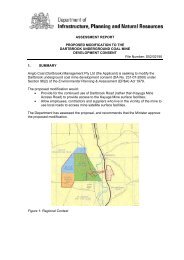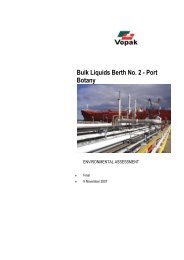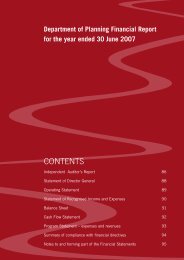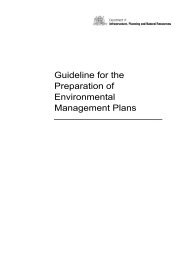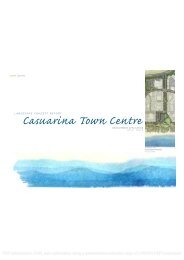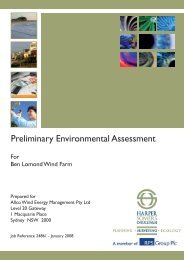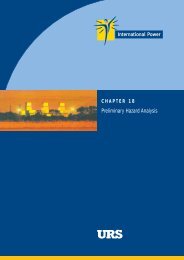Final Report PlanFirst Review Taskforce - Department of Planning
Final Report PlanFirst Review Taskforce - Department of Planning
Final Report PlanFirst Review Taskforce - Department of Planning
Create successful ePaper yourself
Turn your PDF publications into a flip-book with our unique Google optimized e-Paper software.
3.0 BACKGROUND – PLANFIRST OBJECTIVES, PRINCIPLES AND<br />
PROPOSALS<br />
The <strong>PlanFirst</strong> proposals were first made in a White Paper released in 2001. In June 2002, the<br />
former Minister for <strong>Planning</strong> announced the go-ahead for <strong>PlanFirst</strong> supported by start-up<br />
Government funding <strong>of</strong> $4 million and introduction <strong>of</strong> the strategic planning fee.<br />
Since that time work has progressed on reviewing existing SEPPs and Ministerial Directions, the<br />
scoping <strong>of</strong> major issues in certain regions, refining the single local plan concept and developing<br />
options for electronic delivery <strong>of</strong> integrated planning information.<br />
The main objectives and principles <strong>of</strong> <strong>PlanFirst</strong> were aimed at:<br />
• Simplifying the system by reducing the numbers and layering <strong>of</strong> plans (and the controls and<br />
actions contained in them) that apply to land and as a result improve clarity and consistency <strong>of</strong><br />
requirements, certainty <strong>of</strong> process and customisation <strong>of</strong> provisions for land holders.<br />
• Strategies and plans being explicitly founded on the principles <strong>of</strong> sustainability and monitored<br />
as to their performance, resulting in more informed actions on the ground.<br />
• A better connection between the range <strong>of</strong> existing planning structures (eg: social,<br />
economic, natural resource planning) and processes that <strong>of</strong>ten operate independently and<br />
ineffectively.<br />
• Clearer State and regional guidance to facilitate more informed local planning and allowing<br />
the State government to focus on strategic policy development.<br />
• <strong>Planning</strong> and managing regions and local areas as interconnected places not just a collection<br />
<strong>of</strong> issues, geographic features and land uses.<br />
• A point for regional collaboration allowing State significant and locally important issues to be<br />
addressed.<br />
• More meaningful opportunities for community engagement in plan making especially in<br />
helping to set visions and examine future scenarios rather than just comment on single issues<br />
or detailed controls.<br />
• Safeguarding Ministerial powers to intervene where required ensuring environmental<br />
protection or maintenance <strong>of</strong> State or regionally significant assets.<br />
• Improving development assessment practices and simplifying approval processes by:<br />
PRINT VERSION<br />
1 September 2003<br />
• streamlining the remaining concurrence requirements<br />
• crafting urban design and environmental controls to the characteristics <strong>of</strong> a place<br />
• providing a platform for considering and using a more versatile range <strong>of</strong> tools and<br />
incentives (like property management planning and other market based<br />
approaches) for tailoring the implementation <strong>of</strong> plan outcomes and getting lasting<br />
results.<br />
10


